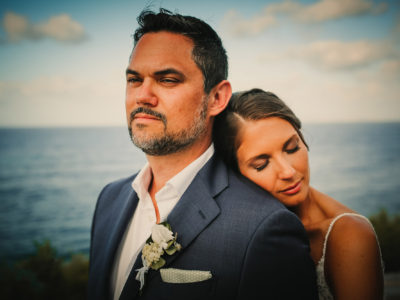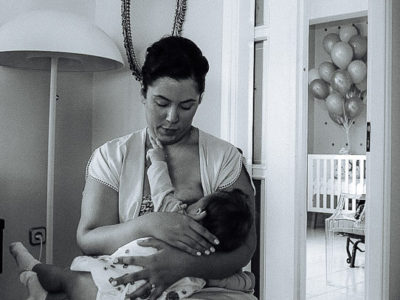Chalkidiki wedding photography
Chalkidiki wedding photography. Wedding photography portfolio of a wedding day at Halkidiki in Greece. As a Chalkidiki wedding photographer one of the places that I photograph at is of course Halkidiki.
Halkidiki is always considered to be as one of the top destinations worldwide for wedding photography, engagement photography, anniversary photography and wedding portraits photo session!
Several of the following wedding images have been awarded, published and distinct-ed.
Chalkidiki wedding photography



























The story
Olga and Frank live in Germany but decided to have an elopement wedding in Greece and more specifically at Afytos village, located at the first leg of Halkidiki peninsula.
The wedding took place at the hotel “White Suites Resort” as well as their party celebration.
They booked me as their wedding photographer since wedding photography and wedding videography was important for them!
After the wedding we had a small wedding portraits photo session within the hotels premises.
These few images are a small sample of the photographic results…..
Chalkidiki wedding photography
Related links
another real wedding portfolio at Chalkidiki
Credits to
Information about Halkidiki (or Chalkidiki)
Chalcidice or Chalkidike or Chalkidiki or Halkidiki (Greek: Χαλκιδική, Chalkidikí, [xalciðiˈci]), is a peninsula and regional unit of Greece, part of the Region of Central Macedonia in Northern Greece. The autonomous Mount Athos region constitutes the easternmost part of the peninsula, but not of the regional unit. The capital of Chalkidiki is the main town of Polygyros, located in the centre of the peninsula.
Chalkidiki today is a popular summer tourist destination.
Chalkidiki wedding photography
Geography
The Cholomontas mountains lie in the north-central part of Chalkidiki. Chalkidiki consists of a large peninsula in the northwestern Aegean Sea, resembling a hand with three “fingers” (though in Greek these peninsulas are often referred to as “legs”) – Pallene (now Kassandra), Sithonia, and Agion Oros (the ancient Acte), which contains Mount Athos and its monasteries. Chalkidiki borders on the regional unit of Thessaloniki to the north.
Its largest towns are Nea Moudania (Νέα Μουδανιά), Nea Kallikrateia (Νέα Καλλικράτεια) and the capital town of Polygyros(Πολύγυρος).
There are several summer resorts on the beaches of all three fingers where other minor towns and villages are located, such as at Yerakini (Gerakina Beach), Neos Marmaras (Porto Carras), Ouranoupolis, Nikiti, Psakoudia, Kallithea (Pallene/Pallini, Athos)
Chalkidiki wedding photography
Tourism
Chalkidiki has been a popular summer tourist destination since the late 1950s when people from Thessaloniki started spending their summer holidays in the coastal villages. In the beginning tourists rented rooms in the houses of locals. By the 1960s, tourists from Austria and Germany started to visit Chalkidiki more frequently. Since the start of the big tourist boom in the 1970s, the whole region has been captured by tourism In the region there is a golf course, with plans for four others in the future.
History
The first Greek settlers in this area came from Chalcis and Eretria, cities in Euboea, around the 8th century BC who founded cities such as Mende,Toroni and Scine[ a second wave came from Andros in the 6th century BC who founded cities such as Akanthos.The ancient city of Stageira was the birthplace of the great philosopher Aristotle. Chalkidiki was an important theatre of war during the Peloponnesian War between Athens and Sparta. Later, the Greek colonies of the peninsula were conquered by Philip II of Macedon and Chalkidiki became part of Macedonia (ancient kingdom). After the end of the wars between the Macedonians and the Romans, the region became part of the Roman Empire, along with the rest of Greece. At the end of the Roman Republic (in 43 BC) a Roman colony was settled in Cassandreia, which was later (in 30 BC) resettled by Augustus.
During the following centuries, Chalkidiki was part of the Byzantine Empire (East Roman Empire). On a chrysobull of Emperor Basil I, dated 885, the Holy Mountain (Mount Athos) was proclaimed a place of monks, and no laymen or farmers or cattle-breeders were allowed to be settled there. With the support of Nikephoros II Phokas, the Great Lavra monastery was founded soon afterwards. Today, over 2,000 monks from Greece and many other Eastern Orthodox countries, such as Romania, Moldova, Georgia, Bulgaria, Serbia, and Russia, live an ascetic life in Athos, isolated from the rest of the world. Athos with its monasteries has been self-governing ever since.
After a short period of domination by the Latin Kingdom of Thessalonica, the area became again Byzantine until its conquest by the Ottomans in 1430. During the Ottoman period, the peninsula was important for its gold mining. In 1821, the Greek War of Independence started and the Greeks of Chalkidiki revolted under the command of Emmanouel Pappas, a member of Filiki Eteria, and other local fighters. The revolt was progressing slowly and unsystematically. The insurrection was confined to the peninsulas of Mount Athos and Kassandra. One of the main goals was to restrain and detain the coming of the Ottoman army from Istanbul, until the revolution in the south (mainly Peloponnese) became stable. Finally, the revolt resulted in a decisive Ottoman victory at Kassandra. The survivors, among them Papas, were rescued by the Psarian fleet, which took them mainly to Skiathos, Skopelos and Skyros. The Ottomans proceeded in retaliation and many villages were burnt.
Finally, the peninsula was incorporated into the Greek Kingdom in 1912 after the Balkan Wars. In June 2003, at the holiday resort of Porto Carras located in Neos Marmaras, Sithonia, leaders of the European Union presented the first draft of the European Constitution (see History of the European Constitution for developments after this point).
Chalkidiki wedding photography
Afytos
(Greek, Modern: Άφυτος) is a village in Chalkidiki, northern Greece. It is part of the municipality Kassandra. It is situated on the northeastern coast of the Kassandra peninsula, 6 km northeast of Kassandreia, 31 km south of Polygyros and 73 km southeast of Thessaloniki. In 2011 its population was 1,273. Its elevation is 50 m. The area around Afytos consists of farmlands in low hills. Its economy is based on agriculture and tourism. Its folklore museum was founded in 1980 by the folklore councillor Nikos Paralis. The museum is located in the building of the Alevras family. Councils and clubs include the Folklore Friendship Council and Afytos Tradition.




